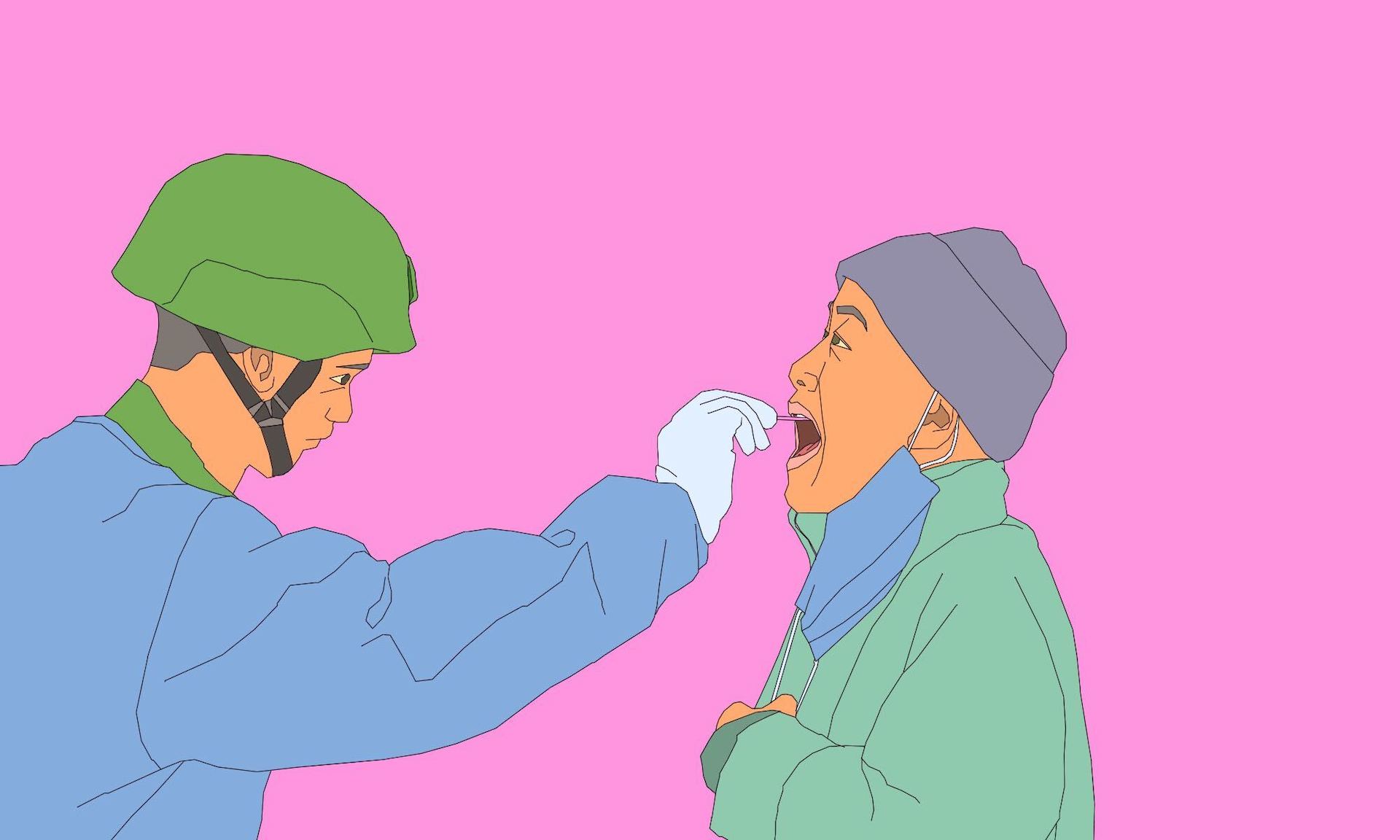Shanghai residents seethe as city enters second week of lockdown
As Shanghai moves to extend its COVID lockdown, its 26 million residents are bearing the brunt of the cost.

Shanghai plans to extend its two-phase lockdown that began on March 28, after authorities ordered citywide COVID testing for its 26 million residents amid the worst outbreak since the start of the pandemic.
China reported more than 13,000 new cases nationwide in the past 24 hours on Monday, with about 9,000 from Shanghai. Jilin Province, another epicenter of the current outbreak, topped 3,500.
- More than 10,000 health workers from around the country have been dispatched to aid COVID efforts in the city, including 2,000 from the military.
- A new Omicron variant, BA.1.1., has been detected in a mild COVID case in Suzhou, a city next to Shanghai, China’s Center for Disease Control and Prevention announced per the state-run Global Times.
- Chinese vaccine maker CanSino Biologics said on Monday that its potential mRNA vaccine has been approved by health authorities to enter clinical trials. The EU also vowed to share mRNA vaccine technology with China, after top leaders met online on Friday for their first summit since 2020.
Criticisms over the mismanagement of the lockdown are growing louder. “Whereas there was little societal resistance to the lockdown once it was imposed in Wuhan, resistance in Shanghai is palpable now,” Dali Yang, a professor at the University of Chicago, tweeted on April 2.
- Rumors have swirled about unreported cases and deaths at elderly care facilities, including Shanghai Tongkang Hospital and Shanghai Donghai Elderly Care Hospital, which are currently battling outbreaks of COVID-19.
- Residents are panic-buying at grocery stores and complaining of food shortages, as food delivery services strain to keep up with a surge in demand.
- Mental health hotlines are ringing nonstop in Pudong New Area, with one state-backed hotline in Changning District receiving over 200 calls last month and 20% more daily calls than normal.
Many on social media are asking for help and are wondering “if the panic surrounding the epidemic is more harmful than the epidemic itself,” after food shortages and footage of young children separated from their parents over strict pandemic restrictions spurred a widespread backlash online.
China news, weekly.
Sign up for The China Project’s weekly newsletter, our free roundup of the most important China stories.
Separating kids from their parents
The policy that separates COVID-positive children from parents drew ire over the weekend, after a video surfaced showing toddlers and infants bawling in a Shanghai medical facility as they were crammed and moved around in metal-barred beds.
- “This is an isolation center for children in Jinshan District. It’s awful,” reads the description of the clip, which was originally uploaded to Douyin, the Chinese version of TikTok, before going viral on other social media sites.
Many people, especially parents, took to social media to condemn the separation rule as a “thoughtless” and “unconscionable” overreach. Horrified by the clip, a mother in Shanghai, who had been separated from her two-year-old daughter after both of them tested positive for the coronavirus, turned to Weibo for help:
- “It’s been three days since my daughter was taken away from me. So far, I’ve only received messages saying the child was fine, but there’s been no photos of her,” the woman wrote (in Chinese) on Weibo. “Please send my kid back to me.”
In response to the criticism, the Jinshan Clinical Center, the hospital portrayed in the video, issued a statement (in Chinese) on Saturday, saying that it was not an isolation location designated for COVID-positive children and that the distressing scene was captured when the hospital’s pediatric ward was in the midst of a transfer to another building.
- “We will improve our communication with parents and make sure that these children get proper treatment,” the hospital said.
Death by COVID avoidance
In a viral article (in Chinese) published on her blog on WeChat, freelance journalist Xú Lìyuán 徐荔媛 told the wrenching story of Lǐ Chǎng 李昶, a 49-year-old former Silicon Valley engineer who moved back to China in 2018.
- Li, who suffered a hemorrhagic stroke last year and has since been battling complications at a rehabilitation facility in Shanghai in the past few months, died on March 28 after nurses who understood her condition were sent to a quarantine location due to a positive case in the building.
Although patients’ family members — including Li’s husband — had protested the decision, the facility rejected their visit requests and hired temporary workers to take care of patients.
- Because Li was unable to talk and the new staff was not adequately briefed on her situation, Li’s death was attributed to delays in medical treatment. Later today, Xu deleted the article upon the request of Li’s family.
Fights over food
At some designated quarantine facilities, the desperation for resources has been captured in a series of videos that showed people fighting over food and other basic supplies.
- Meanwhile, batches of food supplies sent by neighboring provinces and individuals were seen being tossed after they went rotten due to delays in distribution.
An act of resistance goes viral
In a video that has been making the rounds on Chinese social media, a man in Shanghai can be seen wandering around on the empty streets while smoking a cigarette.
- After ignoring repeated pleas from anti-epidemic workers who told him to put his mask on, the man ended up being hauled into a police vehicle and taken into custody (in Chinese) for “violating pandemic prevention rules.”







